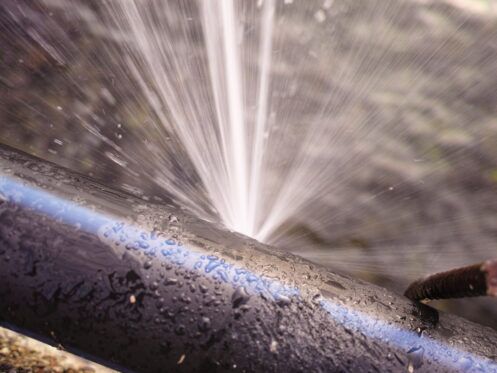Burst Pipe Insurance Claims: What You Need to Know for Water Damage Coverage
Burst Pipe Insurance Claims: What You Need to Know for Water Damage Coverage
Blog Article
Protecting Against Ruptured Piping: Essential Tips to Shield Your Plumbing
Protecting against burst pipes is an essential concern for house owners, specifically throughout chillier months when the danger of cold is increased. Applying critical steps such as correct insulation, routine examinations, and preserving constant interior temperature levels can dramatically minimize the likelihood of pipe failure.
Understand Pipeline Vulnerabilities
Recognizing pipeline susceptabilities is crucial for effective pipes upkeep and avoiding pricey damage. A number of factors add to the sensitivity of pipes to ruptureds, including product make-up, age, and environmental conditions. Older pipelines, specifically those made from galvanized steel or polybutylene, usually degrade with time, resulting in enhanced risk of ruptures and leaks.
Temperature variations can additionally substantially impact pipeline honesty. In colder climates, water caught in pipelines can ice up, increasing and applying pressure on the pipeline wall surfaces, which might ultimately result in a ruptured. High water stress can stress pipelines, specifically at bends and joints, increasing the probability of failing.

Insulate Water Lines Appropriately
Proper insulation of pipes is essential for preventing freezing and subsequent bursts during winter (burst pipe). Insulating your plumbing system efficiently safeguards against temperature drops that can cause expensive damages. Begin by determining prone locations where pipelines are subjected to outside temperature levels, such as basements, attics, and exterior walls
Usage foam pipeline insulation sleeves or wrap insulation tape around these areas to provide a safety obstacle. Make sure that all areas of the pipes, specifically those with minimal warm direct exposure, obtain sufficient insulation. Pay unique interest to joints and installations, as these are much more prone to cold.
When insulating, it's important to select materials that satisfy regional building ordinance and are suitable for the particular setting. Fiberglass insulation is typically advised for its thermal resistance buildings. In addition, take into consideration making use of warmth cable televisions or tape in severe conditions, which can be plugged in to give supplementary warmth
Regularly inspect insulated pipelines for any kind of indicators of wear or damages, as jeopardized insulation can lessen its effectiveness. By taking these aggressive actions, you dramatically minimize the danger of pipe ruptureds, making certain a trusted pipes system throughout the cold weather.
Maintain Consistent Temperature Level
A stable indoor temperature is necessary for preventing burst pipes during the icy months. When temperature levels decline, water within pipelines can freeze, expanding and creating pressure that might ultimately trigger the pipes to burst.Utilizing a programmable thermostat can help handle interior temperature levels successfully, guaranteeing that areas with plumbing continue to be warm also when the residence is empty.
Additionally, it is prudent to permit taps to drip somewhat during extreme cold snaps. This minor flow of water can avoid freezing by reducing stress within the pipelines. In addition, throughout especially serious weather condition events, consider temporarily suspending any type of nighttime problems on your thermostat to maintain a steady cozy setting. By executing these techniques, house owners can considerably reduce the threat of pipeline bursts and guard their pipes systems against the rough wintertime aspects.
Consistently Inspect Plumbing
Normal inspections of pipes systems are critical for avoiding ruptured pipelines and maintaining overall home stability. During these assessments, it is essential to analyze linked here noticeable pipelines for indicators of corrosion, leaks, or use.
In addition, evaluating joints and connections is crucial, as these factors are usually susceptible to leaks. Property owners must additionally analyze water stress levels, as excessive pressure can strain the plumbing system and enhance the danger of pipe bursts.
Think about organizing specialist pipes evaluations at the very least when a year, specifically before wintertime, to guarantee your system is prepared for chillier temperatures. Routine assessments not only aid in recognizing prompt concerns but additionally foster lasting upkeep methods that can improve the lifespan of your plumbing system. By being proactive in your approach, you can guard your home versus the turbulent and see expensive consequences of ruptured pipelines. Focusing on plumbing inspections is an investment in your home's wellness and security.
Know Emergency Procedures
Comprehending emergency procedures is vital for every property owner, specifically after carrying out regular pipes examinations. Being prepared for a plumbing emergency situation can significantly mitigate damage and conserve expenses.
Following, keep essential tools handy. A plumbing emergency set need to include a wrench, plunger, and towels, in addition to a flashlight and a pail for small leaks. Furthermore, think about having the call details for a trusted plumbing technician conveniently available, must the situation intensify beyond your control.
If you identify a leakage or burst pipe, right away switch off the water and notify your plumbing. Document the damage with photos for insurance coverage functions. Understand the signs of potential pipes problems, such as uncommon water pressure fluctuations or damp areas on wall surfaces
Inevitably, aggressive knowledge and speedy action are essential in handling plumbing emergencies, ensuring your home remains protected and minimizing potential damage.

Final Thought
To conclude, stopping ruptured pipes demands a diverse approach that consists of understanding pipe susceptabilities, proper insulation, keeping consistent interior temperatures, regular assessments, and knowledge of emergency situation procedures. By implementing these crucial methods, the risk of plumbing failings can be significantly minimized, thereby making sure the longevity and effectiveness of the plumbing system. Positive procedures not just protect versus potential damage yet also contribute to total water conservation and the security of building.
In colder climates, water caught in pipelines can ice up, expanding and putting in pressure on the pipe wall surfaces, which might ultimately lead to a burst. When temperatures decline, water within pipelines can freeze, producing and broadening pressure that might ultimately create the pipes to burst. By implementing these strategies, home owners can dramatically lower the risk of pipe bursts and secure their pipes systems versus the rough winter elements.

Report this page